Batik Technique
Batik Technique – Wax resist and dye is a technique synonymous with Batik in this part of the World. Batik is a traditional textile of the community – it remains one of Asia’s richest cultural heritage and expressions.
Enraptured by the infinite range as a medium for expression – the beauty and essence of artistic value evolves around the progressive aspect of life and the efforts of moving forward – the work has affinity with the light spirit of livelihood – signifying growth and protection to carry forward and beyond.
Love gave new life – and new approach – using ideas that created from experience – good and bad and open the window of inspiration extending knowledge in new skills and techniques.
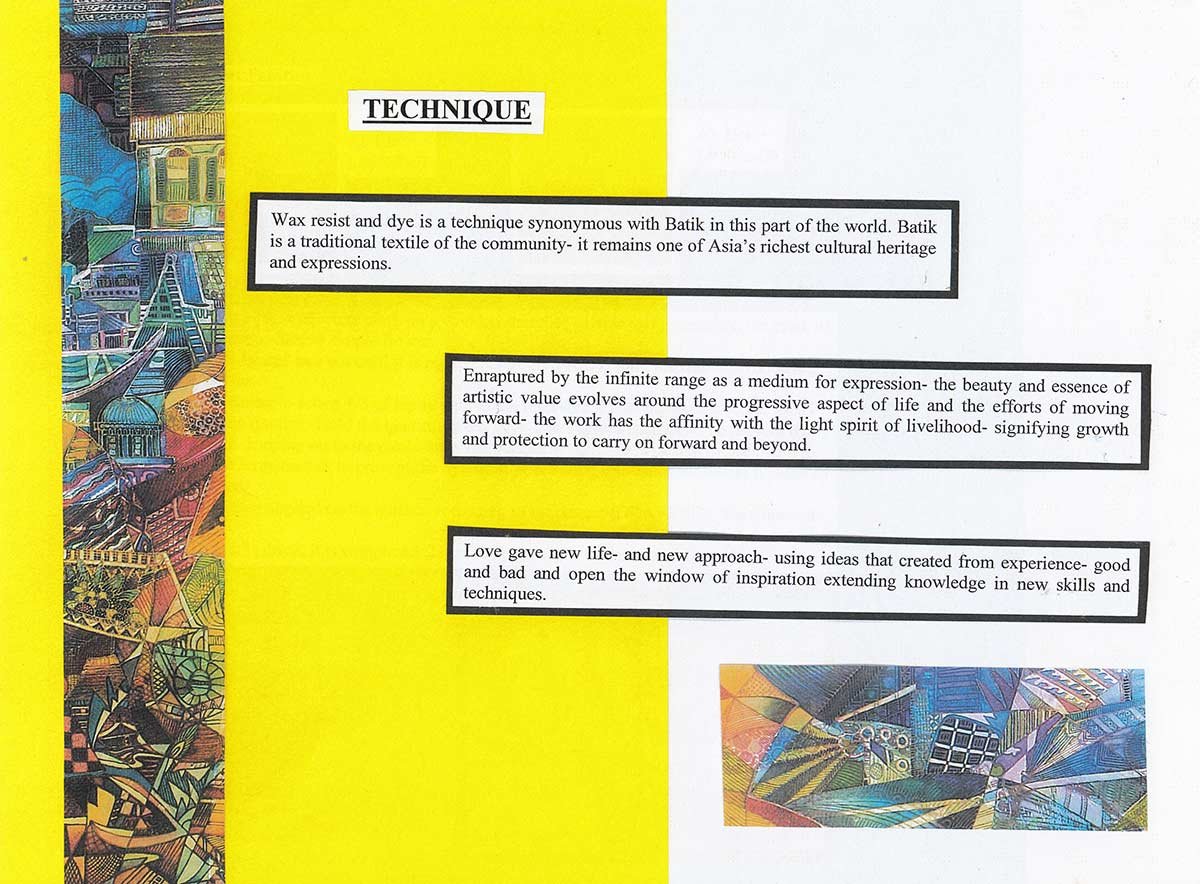
Batik Direct Painting
- Stretch a piece of white cloth on a wooden stretcher – Draw using pencil on the cloth of any pattern – advisable simple flower.
- Wax is heated in a pot until it is melted (LIQUIDIFIED) retain the heat at a moderate temperature.
- Use the Tjanting to scoop 1/3 of liquid wax in to the reservoir. Clean the excess wax around the Tjanting. Hold the Tjanting in the forty-five degrees position – to prevent the wax from dripping on the cloth, draw the outline of the desired design or use brush to cover the large area as to prevent the dye from penetrating into the area where it is not to be colored.
- Color then applied on the surface according to the design (DRAWING). Then leave it to dry.
- When it is dried, it is completed. Then the painting is mounted and framed if necessary.
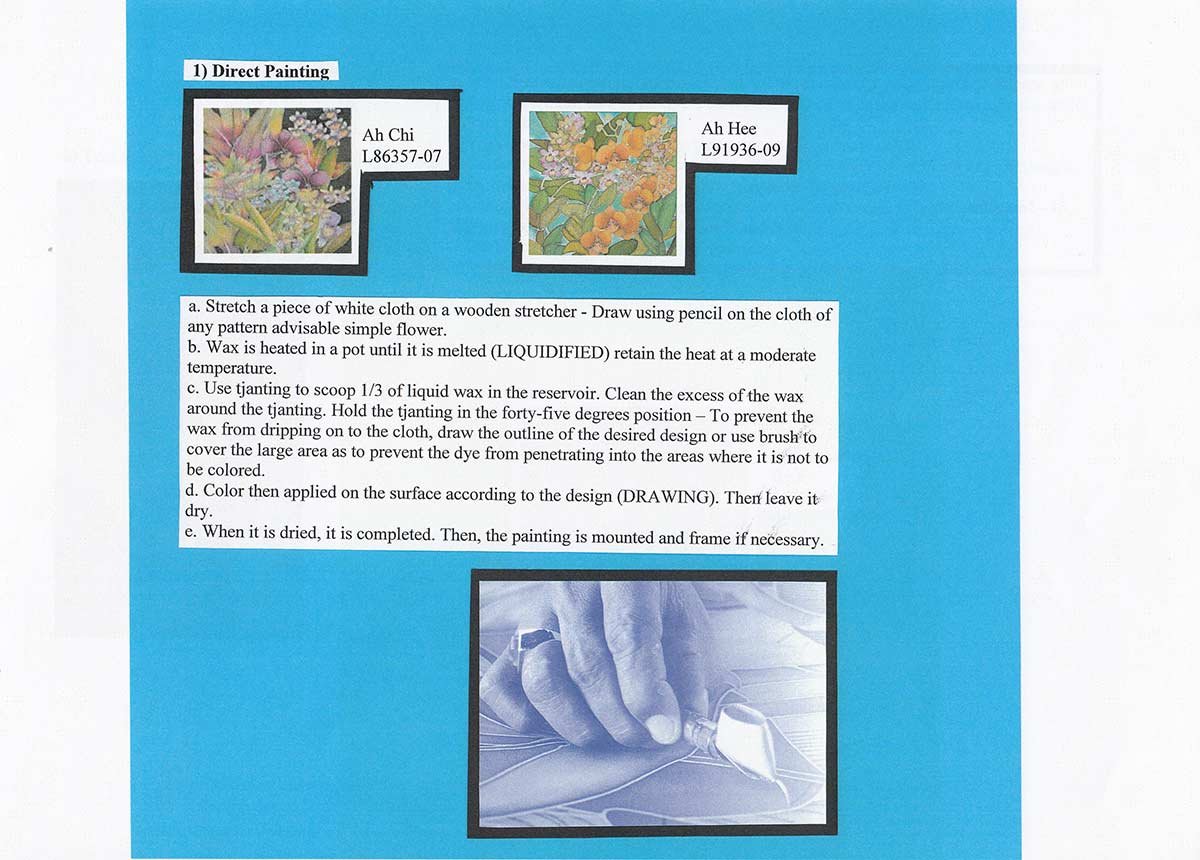
Batik Technique Overlap (Flora)
- When a direct painting is completed, it will be enhanced by adding more essence of design in the main area of design. This added essence of design is often depicting the socio-culture of the community.
- The dyes are mixed in a pallet that prepares the primary colors.
- Colors are mixed and diluted to achieve the required shades that blend into the design.
- By inserting the essence, it is adding texture to the piece of work.
- Using the wide range of primary and secondary colors, the work is further enhanced – In applying one over the other to create depth and texture.
- The finished work is to be dried and mounted.

Batik Overlapping Method (Scenery)
- After Drawing the subject, layers of wax are applied using tjanting. The process of tjanting is to be prepared several times. For the first layer only general details are required.
- Pre-planned color is then applied and left to dry.
- Greater details required with the second layer of wax.
- After waxing, colors are added.
- Finally, the finishing touch is by adding stronger color.
- After the final layers of wax and repeated coloring, the painting is completed to satisfaction. It is left to dry and mount. Then it is completed.
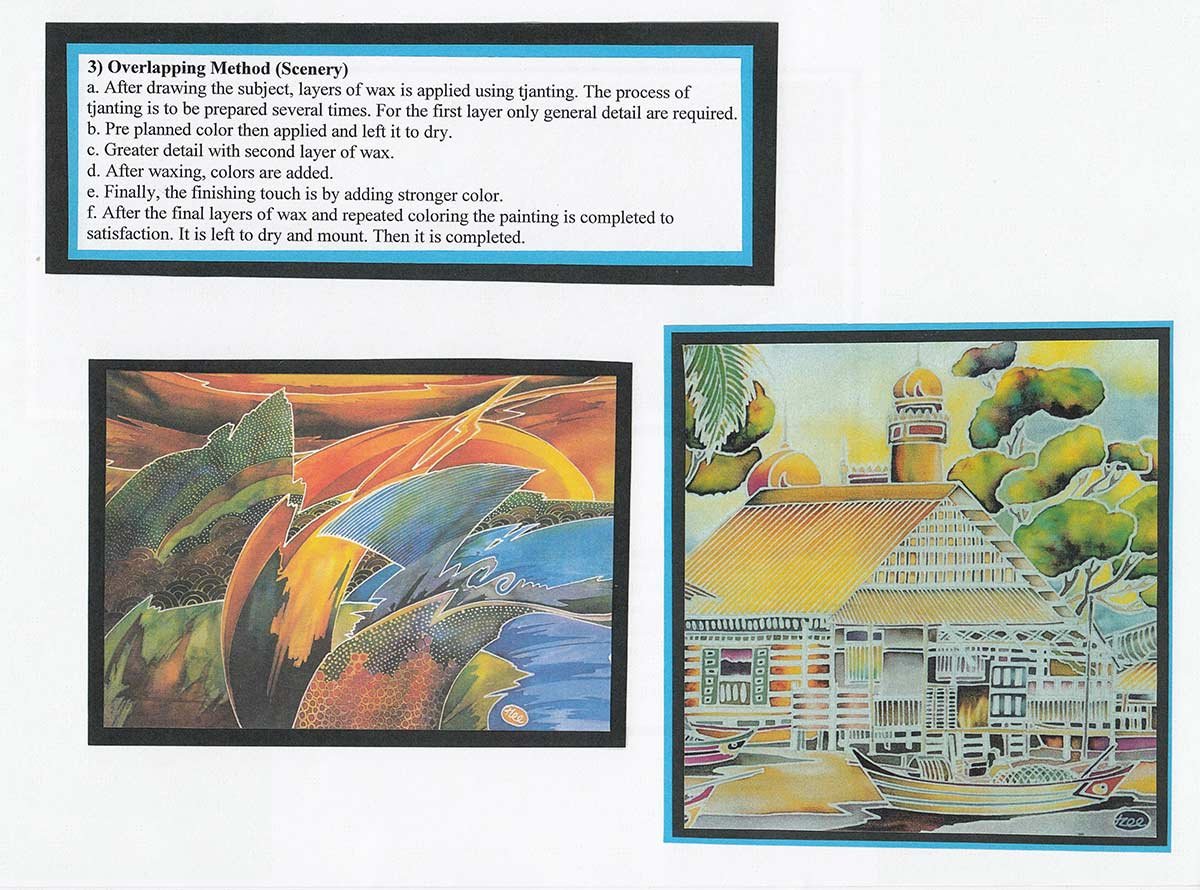
Batik Cracking Method
- Wax is applied with the brush on to the area intended to be crackled.
- The cloth is taken out from the stretcher. The cloth is then crumpled and crushed to produce the uneven crackle effect and stretch back the cloth onto the stretcher.
- Color is then applied on the cloth and allow the color to seep through the cracked parts of the wax. The stain of color on the cloth produces a web-like effect. The color of the crackle will be the color that is applied on.
- It is also possible to color the cloth area that needs the cracking effect. The cloth is then dried.
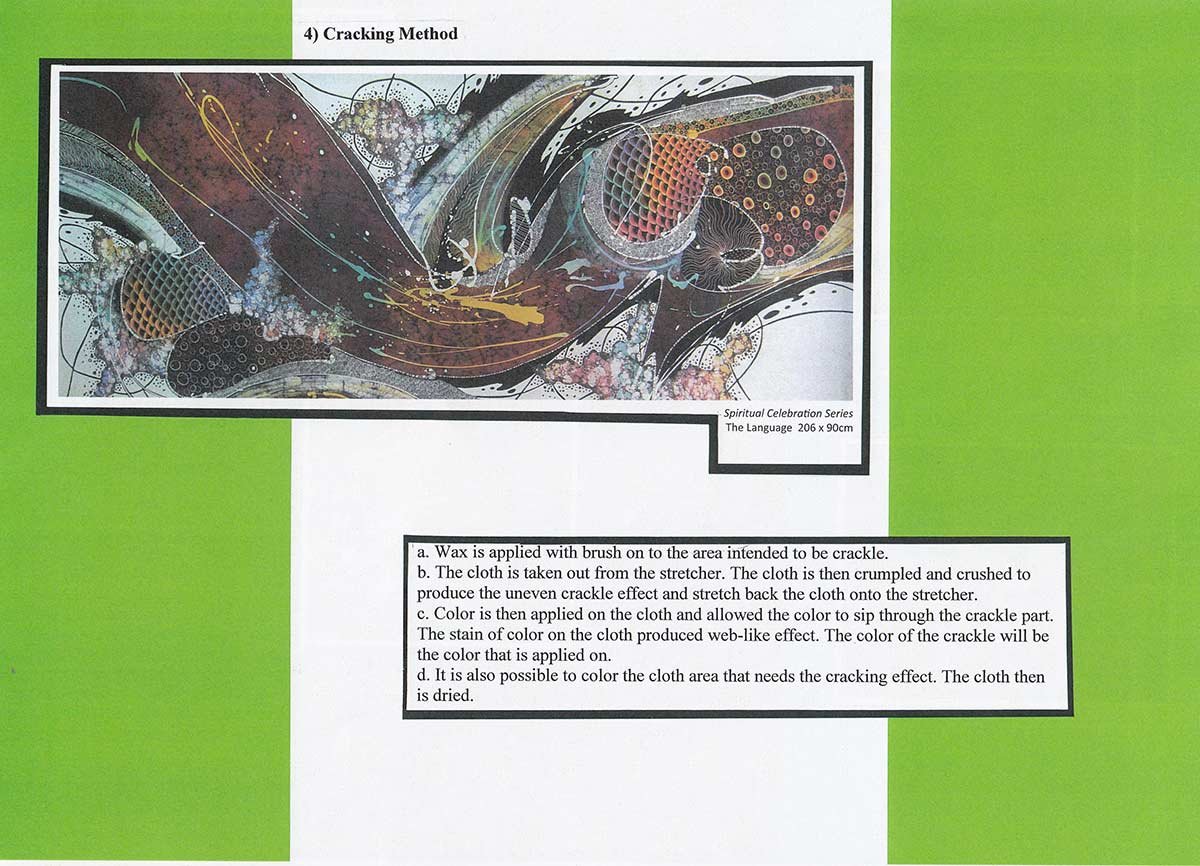
Batik Impressionist Silhouette
- Cloth to be stretched firmly on the stretcher so it will allow the color to stay evenly on the surface.
- Apply diluted color dye using different sized brushes. Let the unevenness stay in the strokes of color. Merge into on another – leaving the track of images.
- Let the color be interrelated and dipped in a different direction.
- The stretcher is raised and then tilted to the position where the color would run naturally and it merges into the other color naturally.
- Color is to be added to expose the subject according to the desired necessity.
- The work of art is then completed and is ready to be mounted and framed.
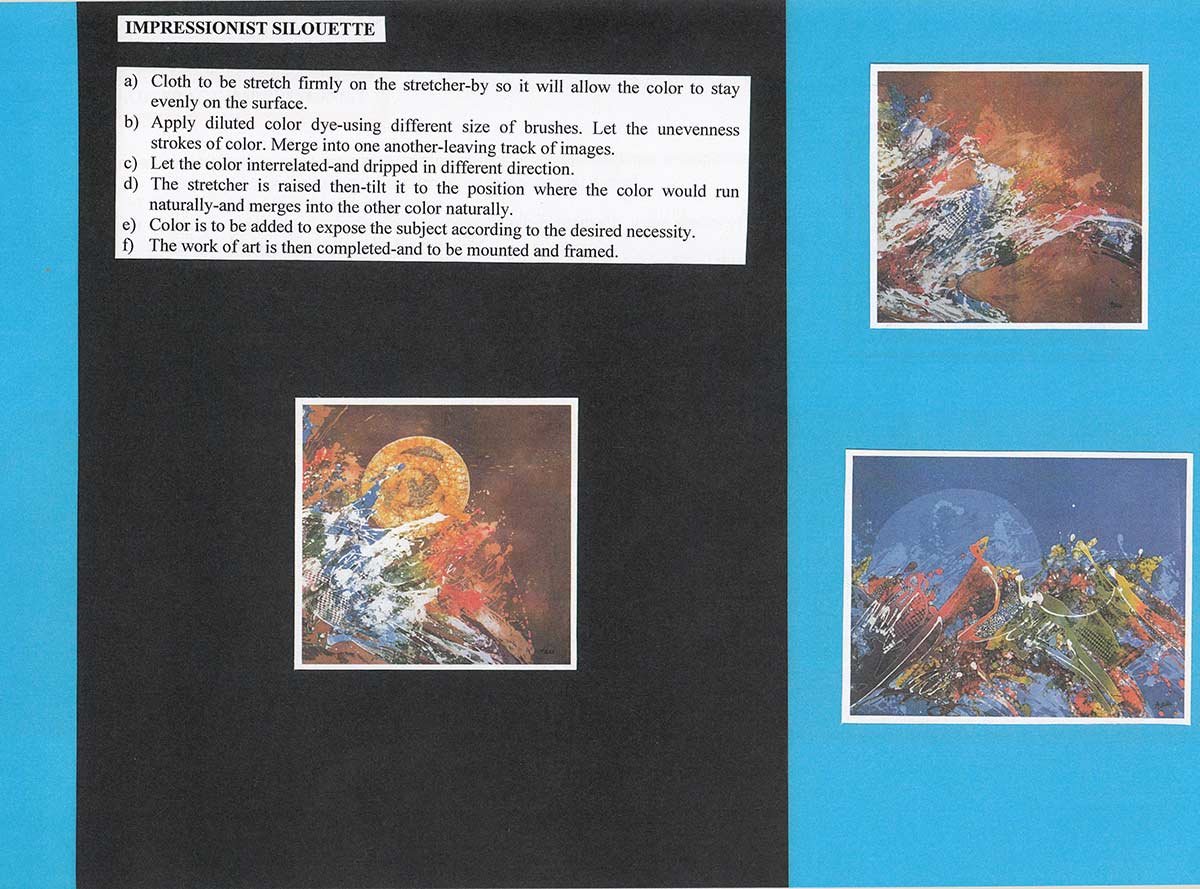
Batik Abstract Impressionist
- Different color is appliedon the surface using brush and then let it dry.
- Segmented area is divided using tjanting.
- Coors are added on the surface of the colored cloth – individually using shades of colors on the area that is bound by the wax line.
- The painting sometimes has added wax to establish the subject surface – this is enhanced with the respective colors giving strong structure and foundation.
- When satisfaction is achieved the painting is then completed and ready to be mounted and framed.
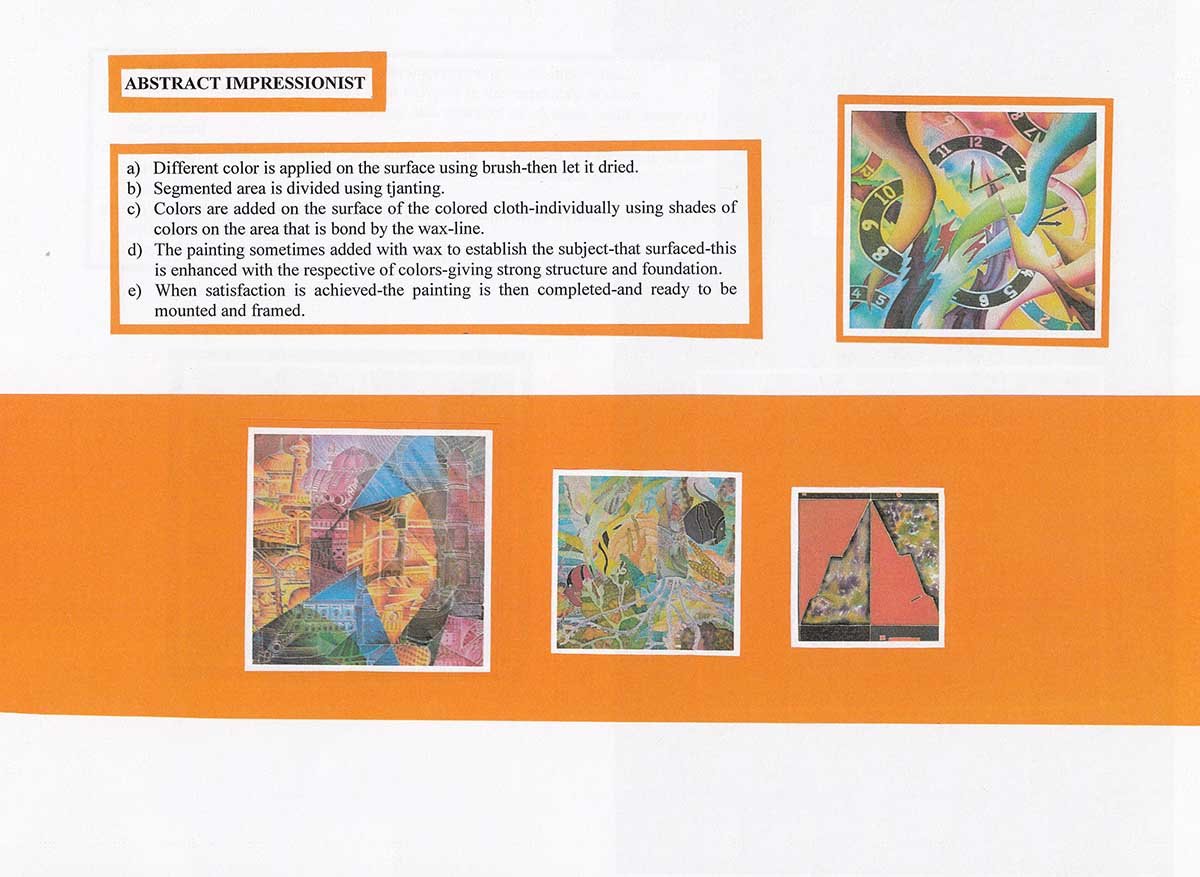
Batik Lyric In Wax
- Tjanting is used to draw using wax – the impression is up to the individual.
- Color the proportion accordingly – with richness – in the respective color.
- The Tjanting is further used in drawing the essence of designs until the image is recognized.
- Overlapping lines are repeated – the subject is further developed, not focusing on the reality of the subject but identifying the essence of design – which the tjanting lines created.
- Color is added to identify areas of the different forms – here the batik technique and skill are defined and cooperated.
- The finished art work is to be framed or mounted for display (exhibit).
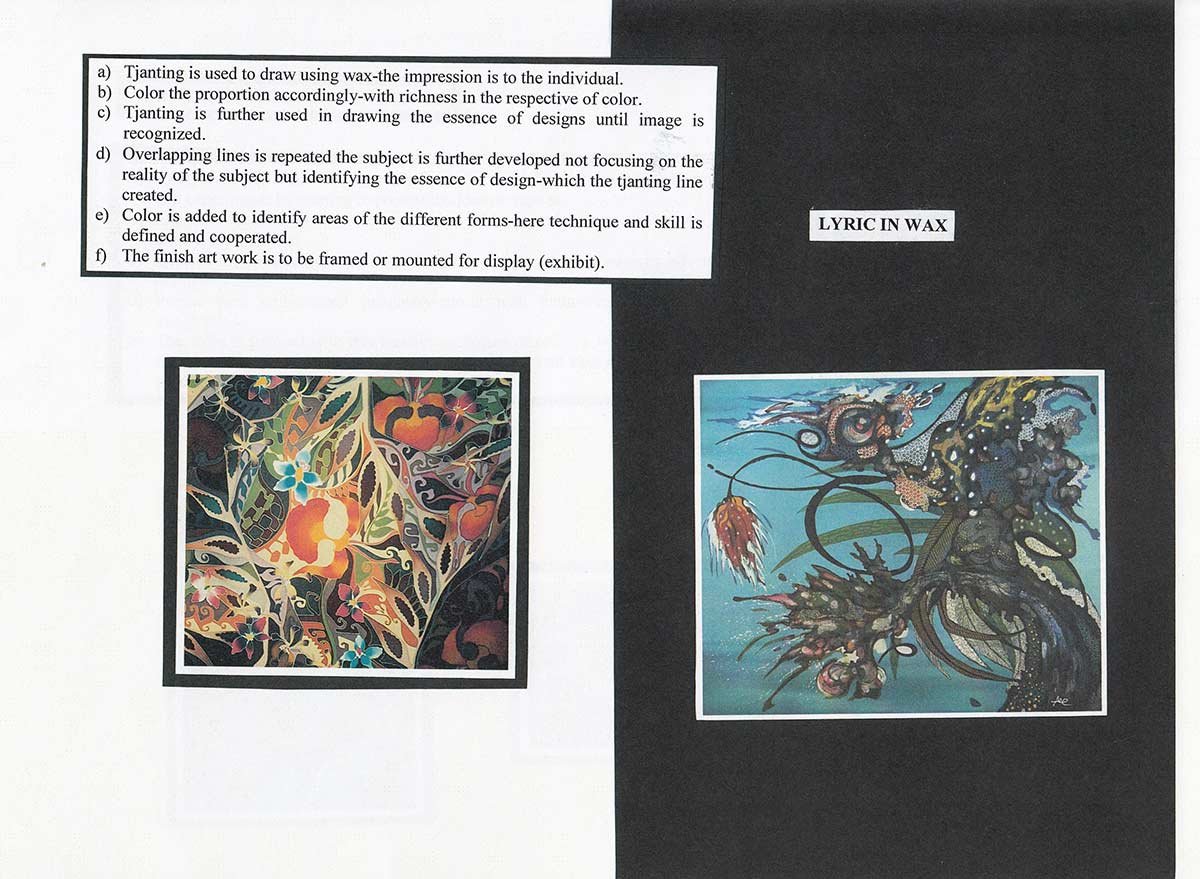
Batik Expression In Color and Lines
- Artist creativity in batik technique is further enhanced by their knowledge- upbringing – – background and experiments by starting to present the idea on canvas.
- Express repeatedly – fusing the expression of lines and colors inspired by the experience achieved.
- Express the imagination and expanding the ideology with conscious efforts to move forward.
- Pursue with architectural imaginary – enriched with fantasy – nature and strong imagination.
- The color is focused with this technique – choices of color is very important – the mix of color determines a good painting. The painting should always be mounted and protected.
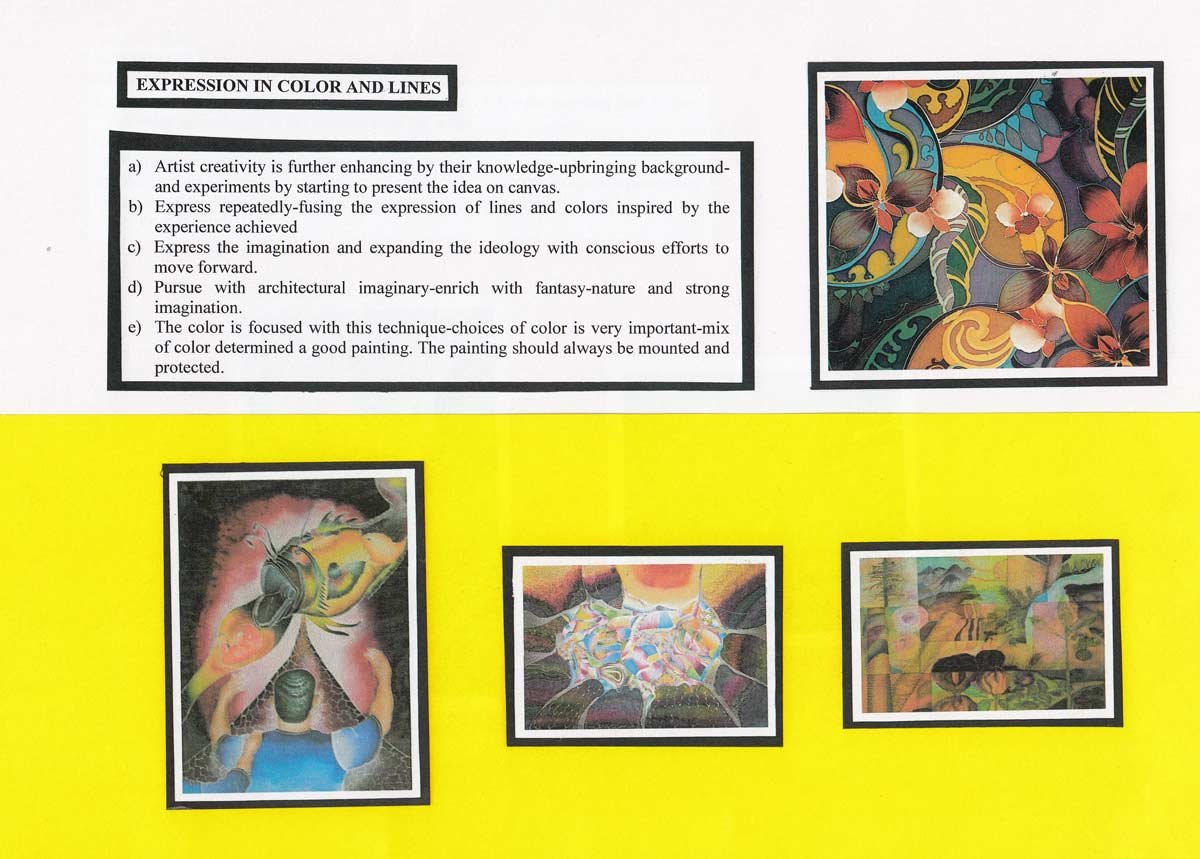
Abstract Batik
- Free expression of wax and different application of dye – the painting is then further developed accordingly to the inspiration of the artist.
- Document analyze-express observation of the environment.
- Pronouncing the statement about past and present.
- Depict forms of pictorial narration of interstate of being – the image is representing spirits of livelihood and signifying growth. All completed paintings to be mounted or framed.

Here we have covered nine methods of Batik Technique.

